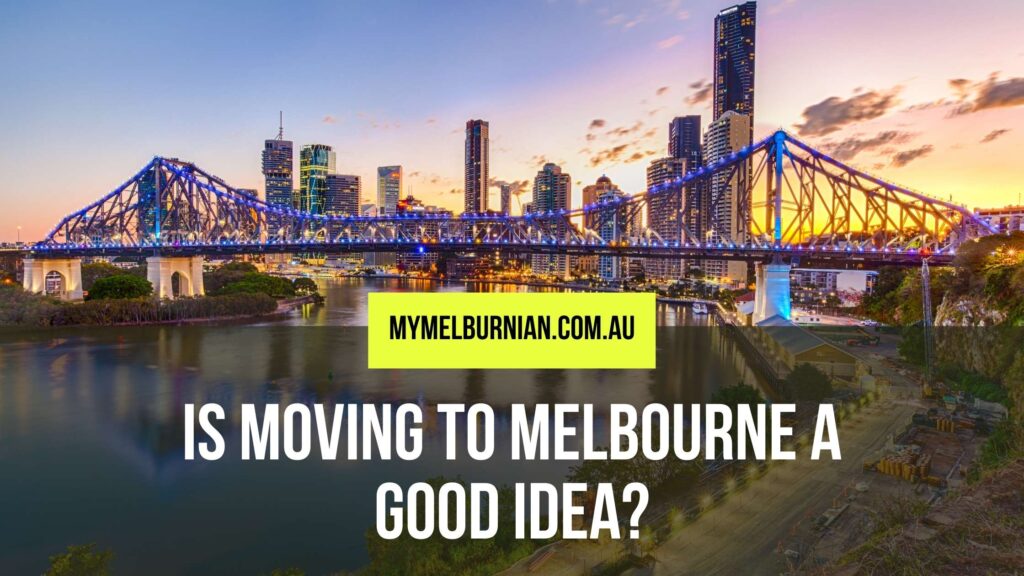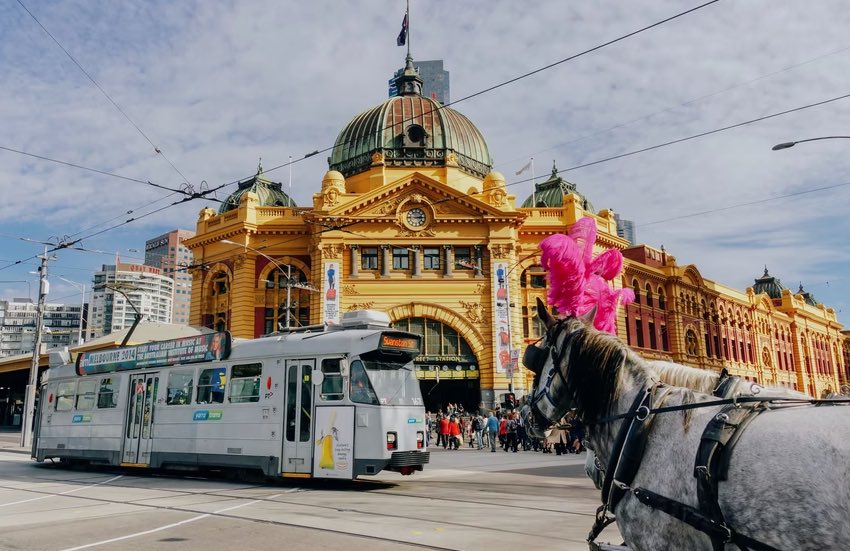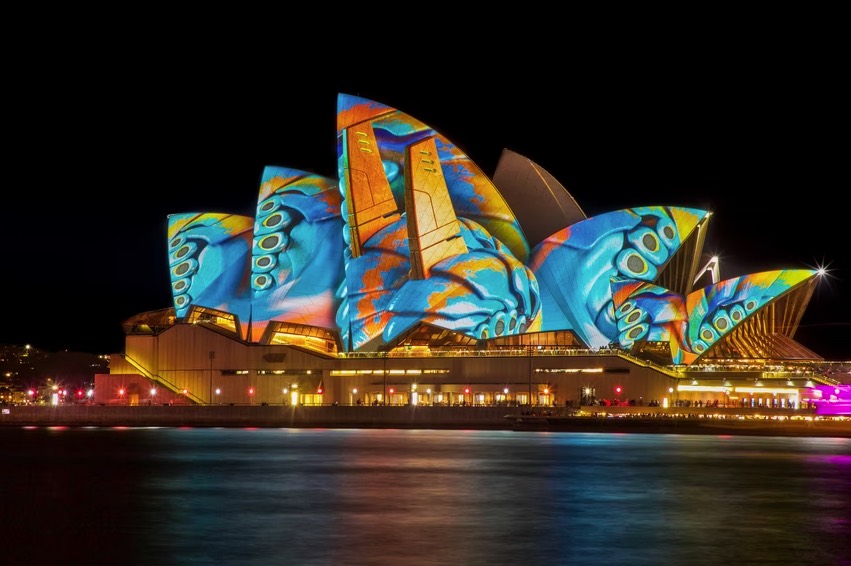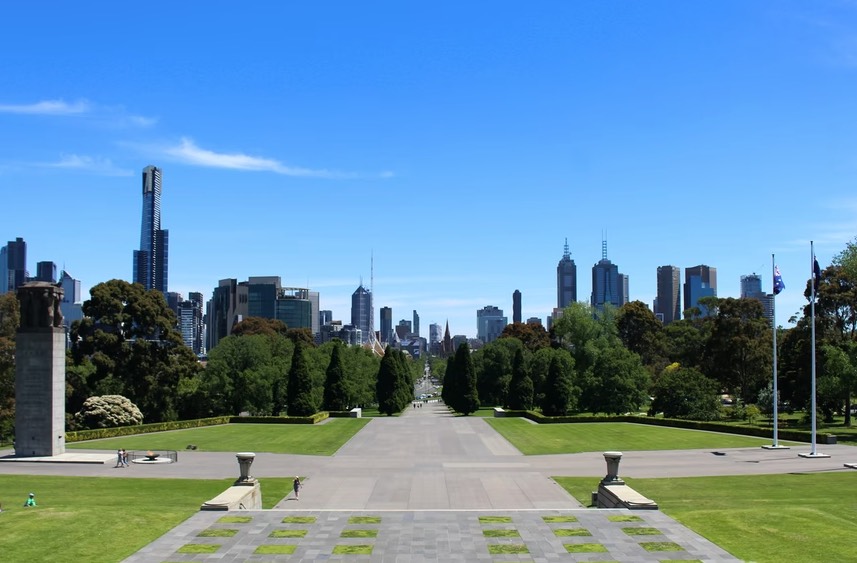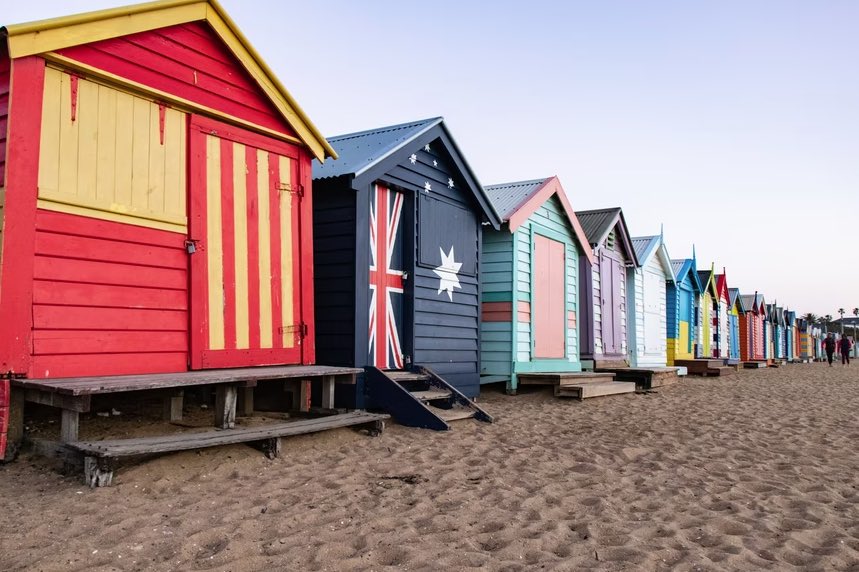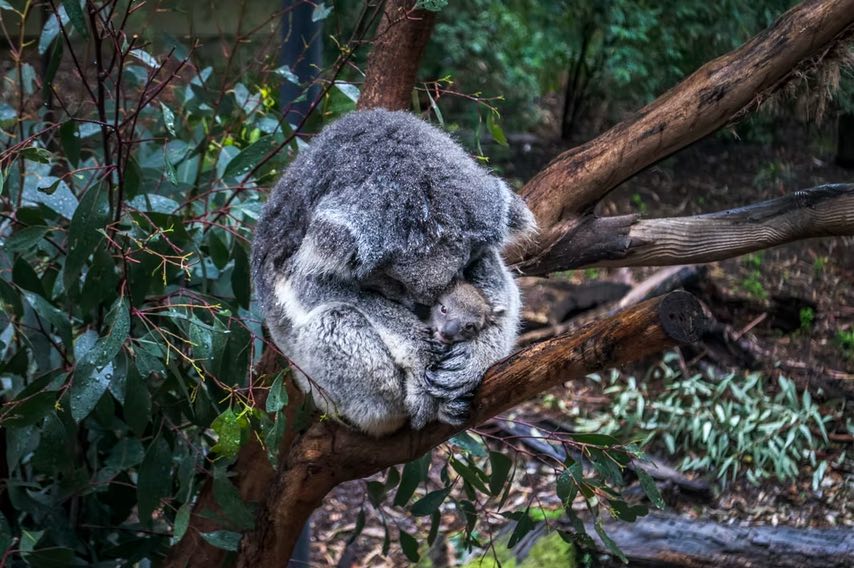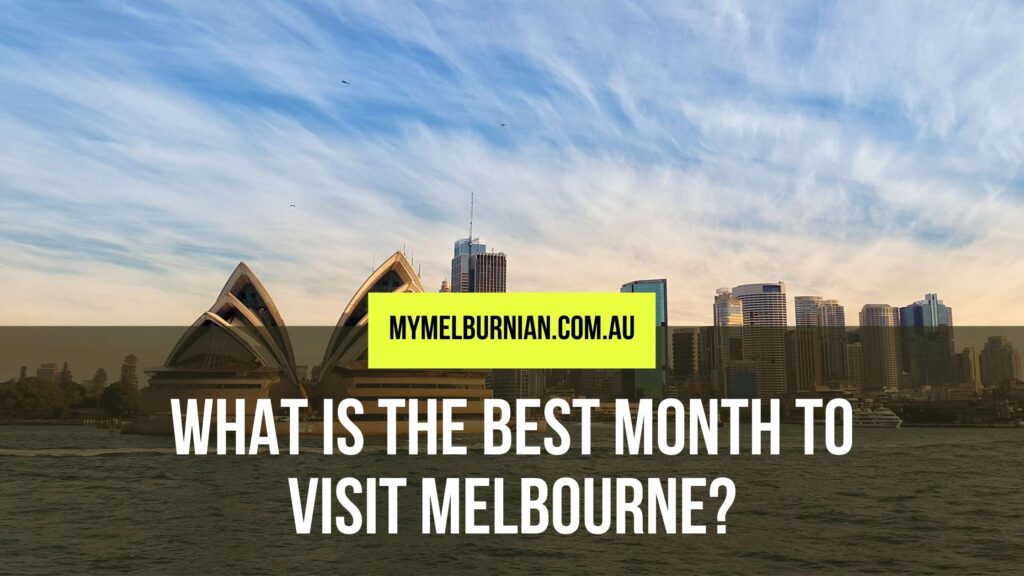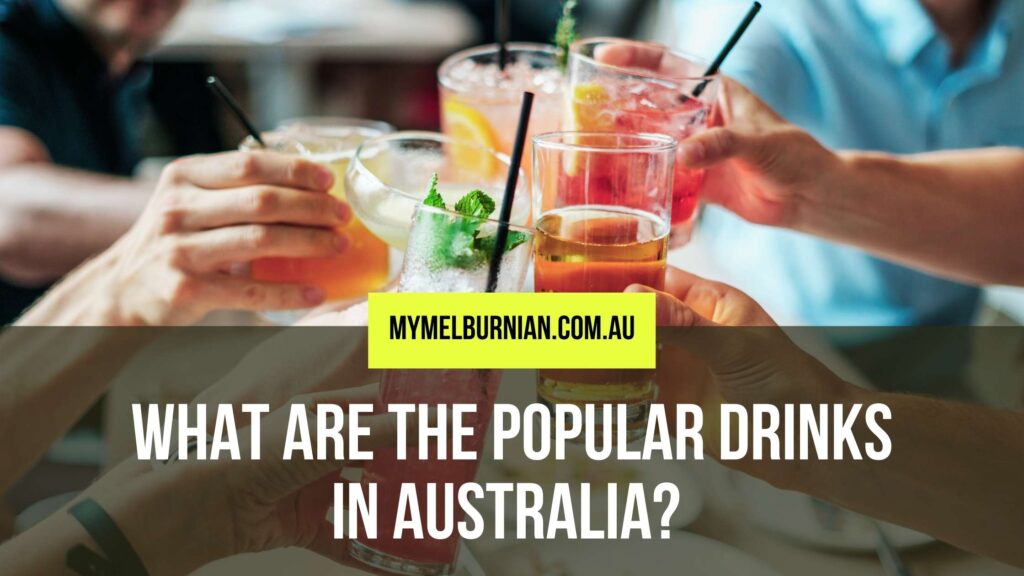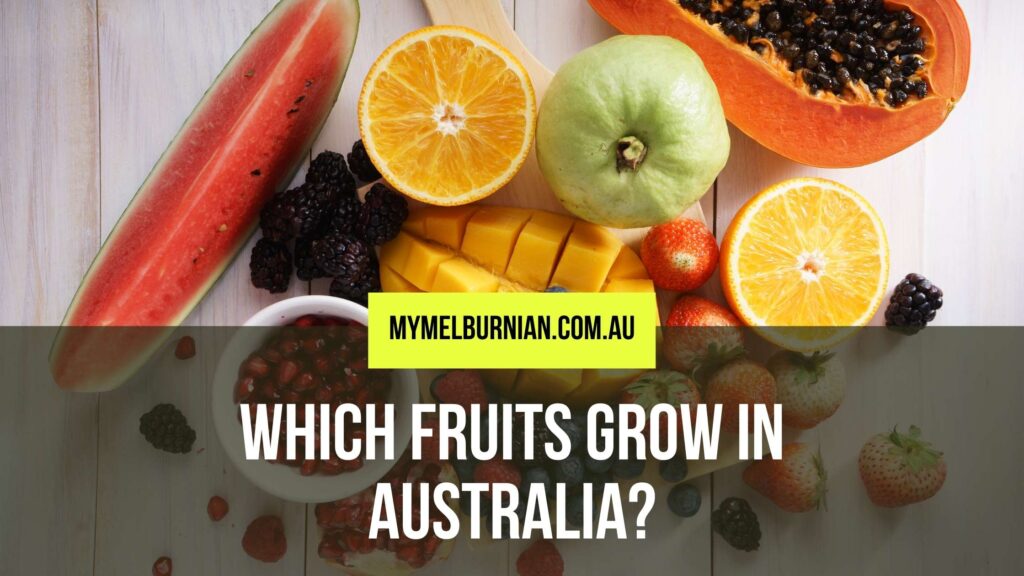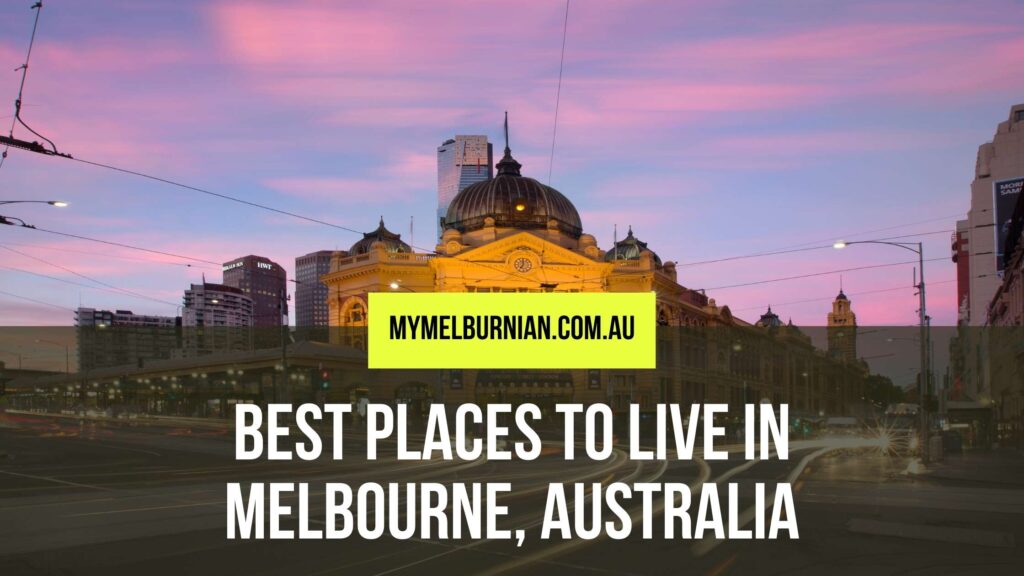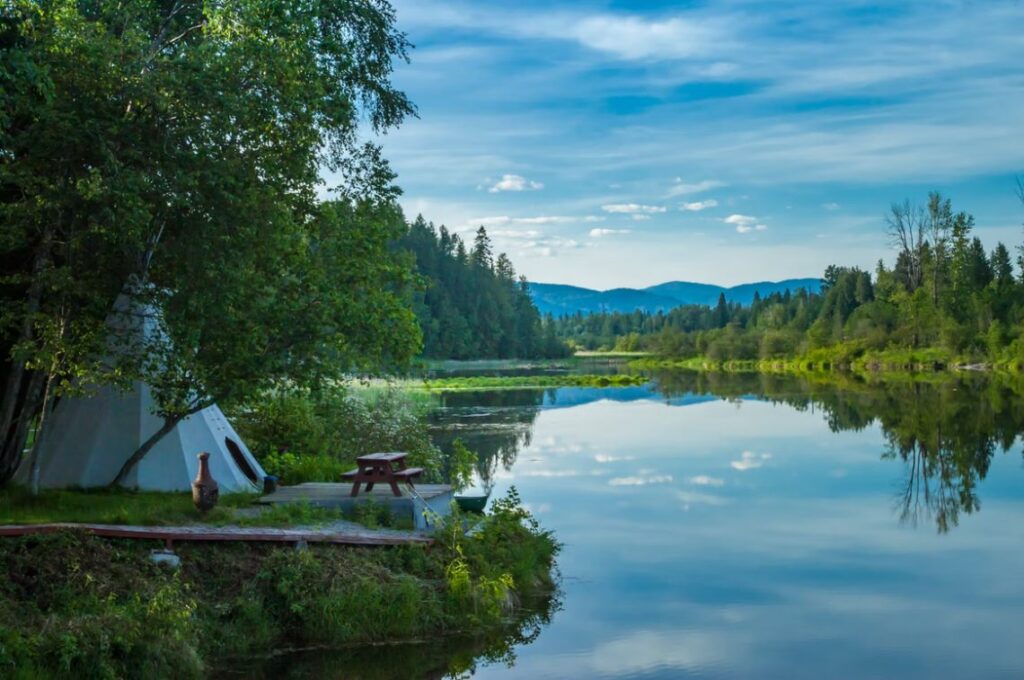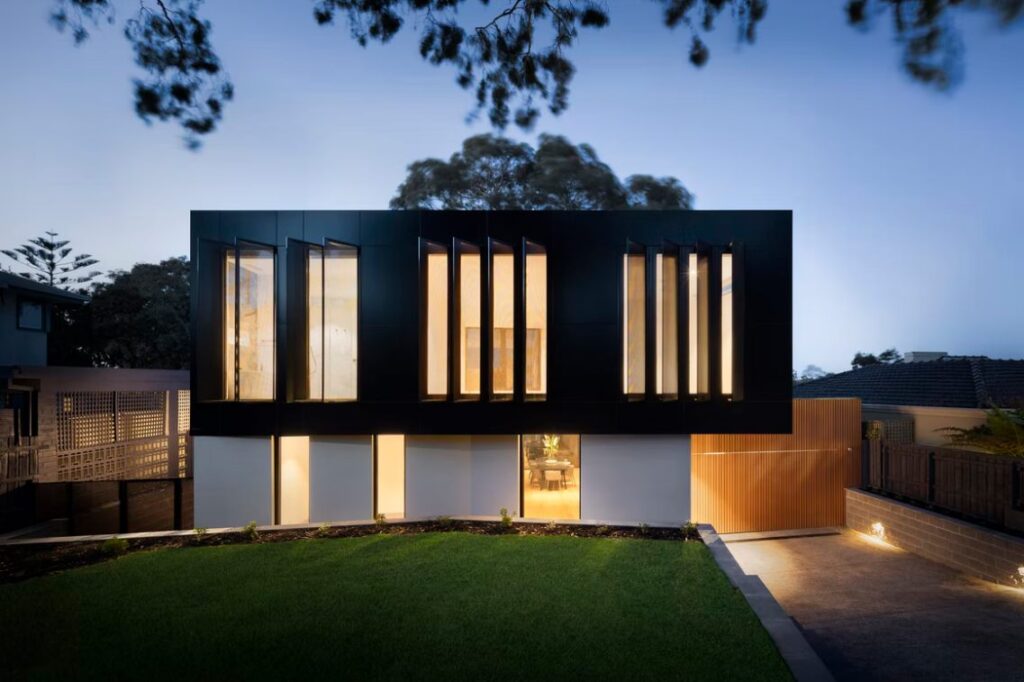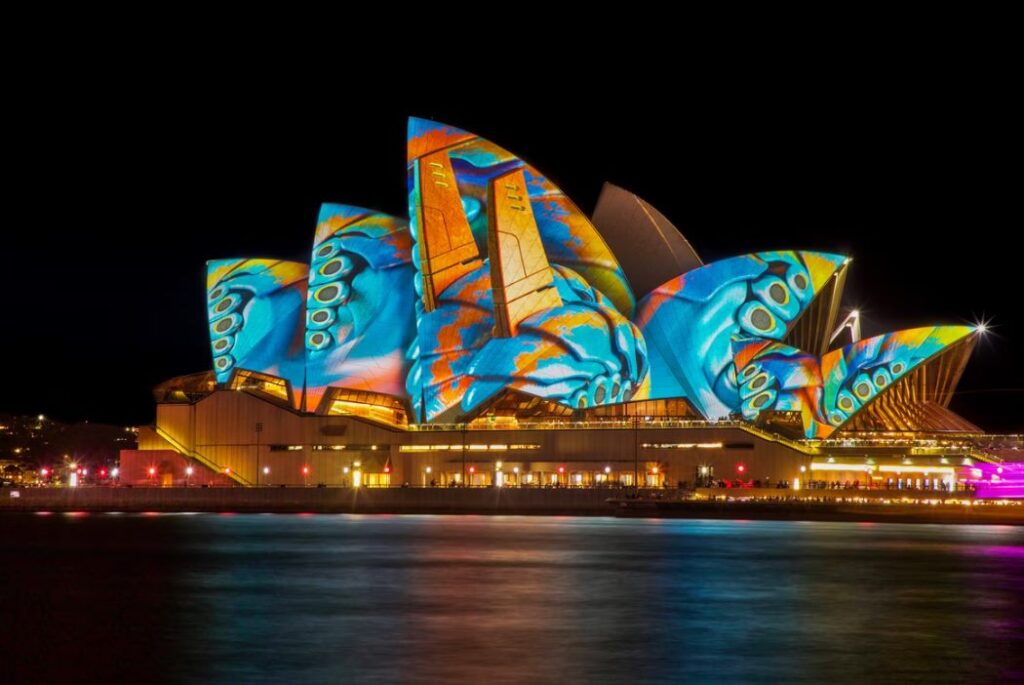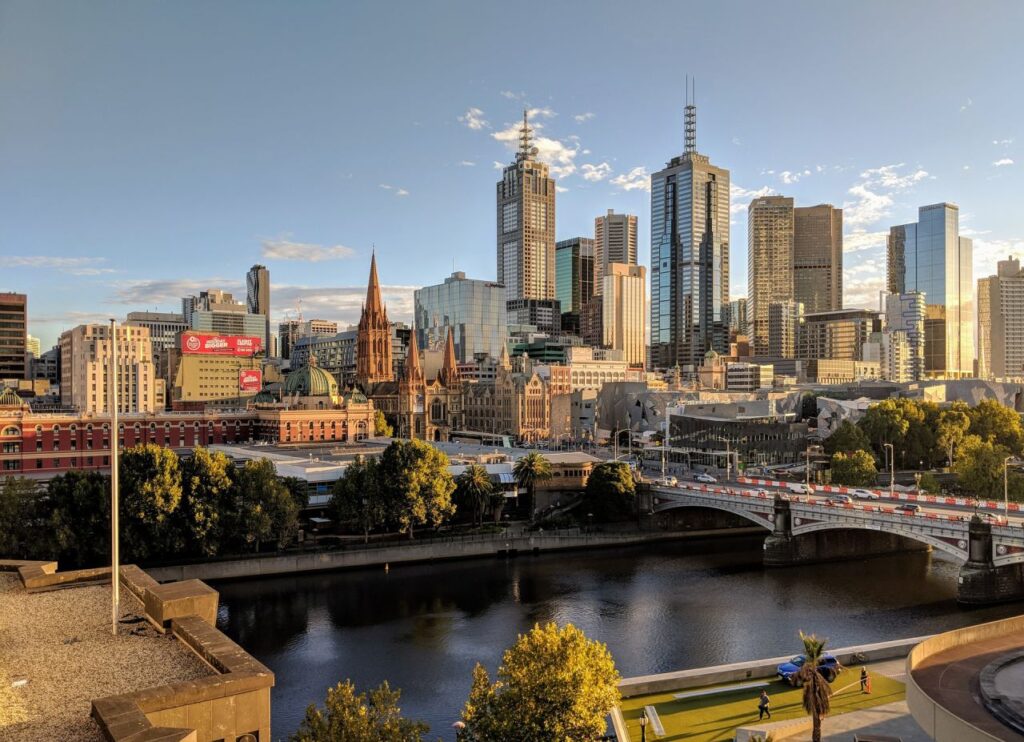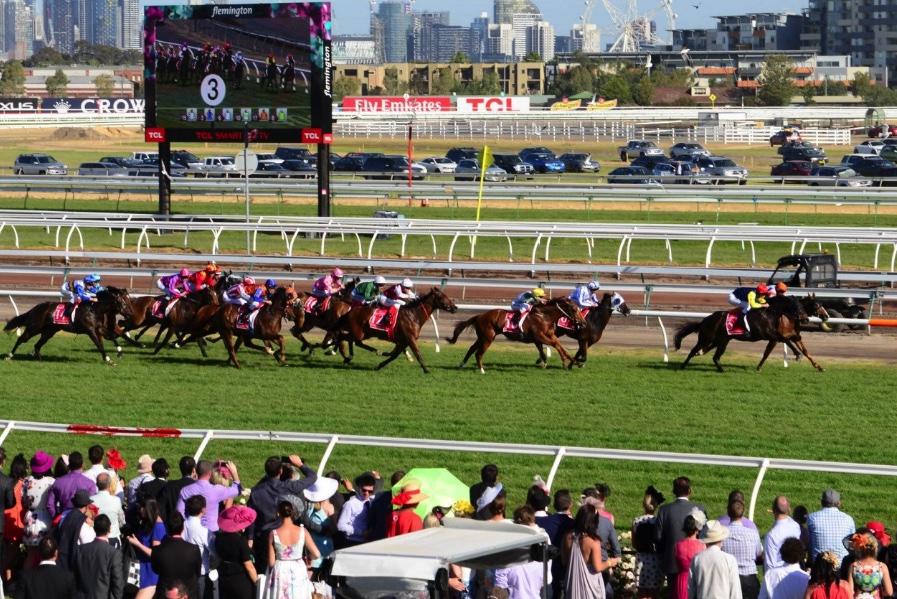There are several facts regarding life in Australia that you should be aware of before making the big move Down Under. What most people think of when they think of Australia is beer, barbeques, and a warm climate (although there is also a lot of that). This is a country where you can go skiing one day and surfing the next. Every aspect of life, from the local fauna to the weather, is vibrant, thrilling, and a little perilous. Unless they travel the country together, no two visitors to Australia will have the same adventure. If you need help with anything for your big move to Australia, we're here to help.
Something Better Than The Gold Coast.
For a number of years, Melbourne had the title of "most liveable city," but this year, Vienna surpassed it, relegating Melbourne into second place.
When settling in Melbourne, you will likely encounter the term "Victorian" frequently. This is not addressed to people in Victorian England but rather to residents of the state of Victoria, specifically the city of Melbourne.
In spite of the fact that Australia was once a British colony and its people speak English, the country has developed a unique culture and history all their own.
With a population of four million, Melbourne is Australia's largest city after Sydney. It is the centre of Australia's artistic and cultural life. A great deal of street art can be found in the city's many alleyways, which are home to shops, cafes, and eateries. Those who visit rave about the city's coffee scene.
One of Australia's earliest settlements, Melbourne was also the country's first gold rush hub. Because of the gold rush that followed its discovery in the 1850s, Melbourne is now Australia's most populous city and the wealthiest city in the world.
Similar to Nz, a day there can feel like any of the four seasons, but with the added bonus of a mild climate. Located on the Yarra River, it features popular picnic areas for locals and visitors alike. It's incredibly diverse, with sizable communities of Greeks, Italians, Chinese, and Indians. There are two major universities located in Melbourne: Monash and the University of Melbourne. It is considered one of the best student cities in the world.
An Overview Of Melbourne
The state capital of Victoria is Melbourne, the second-largest city in Australia. Melbourne, situated on Port Philip Bay, is often referred to be "Australia's Cultural Capital." Melbourne earned this moniker due to its abundance of Victorian-era buildings, cultural institutions, parks, gardens, and shopping areas. There are roughly four million people living there, and the vast majority of these individuals are sports fans who come from a variety of ethnic backgrounds.
Grampians National Park, the Great Ocean Road, and Philip Island, home to a penguin parade, are just a few of the nearby attractions for visitors to Melbourne. Many people travel to Melbourne for this and other athletic events. If you're considering making Melbourne your new home, you'll be happy to learn that the city is always buzzing with activity.
FAQs About Moving To Melbourne
It's no wonder Melbourne consistently rates itself as the most liveable city in the world. Numerous public transport options, low crime rates, plenty of career opportunities, a fantastic arts and cultural scene, excellent universities, and a relaxed lifestyle makes Melbourne the place for anyone and everyone.
Con: It's expensive
As the second most expensive city in Australia (Sydney takes the top spot), living in Melbourne will cost you. From rent to groceries, you can expect to pay more here than in other capitals in the country.
Melbourne was ranked the #1 most liveable city in Australia and #10 in the world in the Economist Intelligence Unit's (EIU) Global Liveability Index for 2022. This list assesses 173 cities in stability, healthcare, culture and environment, education, and infrastructure.
If you've never visited Australia before and are looking for in-your-face classic tourist activities and Instagrammable heaven, Sydney might be the best choice. But if you're looking for a destination where you have to scratch the surface a little to discover some rich culture, give Melbourne a try.
Melbourne is generally considered to be a very safe city. In the 2021 Safe Cities Index, it ranked 9th in the world for overall safety. It was rated as having 'very high' safety across digital security, health security, infrastructure security and personal security. Melburnians are very friendly and welcoming.
The Economy
It is expected that Melbourne, Australia's second-biggest city, would overtake Sydney as the country's largest in the near future. It imports 35,000 foreign workers annually to meet the demands of its expanding economy. The city's economy is booming, and there are plenty of job opportunities as a result of the arrival of headquarters from companies all over the world. In addition, it is the centre of technology in Australia.
Buying A House In Melbourne
The central business district (CBD) is typically more expensive and less spacious than the surrounding neighbourhoods in most Australian cities.
The great thing about relocating to Melbourne is that most of the areas within easy driving distance of the central business district are essentially small cities in and of themselves. A backyard or a reasonably sized apartment may even be within your budget range.
Melbourne's Suburbs
There are two main divisions of the city of Melbourne: the central and the metropolitan areas.
Central Melbourne Is Divided Into The Following Sub-Regions:
City Center
Melbourne's CBD is located between the Yarra River to the north and the new Docklands sector to the west. There are several excellent eateries, bars, and nightclubs in the central business district of Melbourne. Melbourne is an exceptional place to call home because of its vivacious culture and well-developed public transportation system. More and more people are drawn to Melbourne since it is consistently ranked as the world's most liveable city.
South Bank
Theatrical productions, artistic endeavours, the Crown casino, operas, and upscale eateries all contribute to the city's reputation.
St Kilda
offers pleasant weather, beaches, and a lively bar scene. While Melbourne as a whole may not be recognised for its beaches, the district of St. Kilda definitely caters to those who seek a seaside atmosphere. As a matter of fact, it is widely regarded as Melbourne's prefered coastal community.
Located about 6 km from the Central Business District, this hip shopping and dining district features Luna Park, Art Deco high-rises, and historic cottages. Entertainment can be found in the weekly Sunday markets, along the waterfront promenade, and on the world-famous Fitzroy and Acland Streets. St. Michael's Grammar School and St. Kilda Primary School are both convenient for families.
South Melbourne
The historic ports and Clarendon Street are included.
Inner North
Is located in the heart of the University neighbourhood and is famous for its traditional Italian food and culture.
Inner East
In addition to being the working class, the Bohemian neighbourhood also features numerous stores, ethnic Vietnamese restaurants, and enjoyable watering holes.
Stonnington
Located in the heart of Melbourne's CBD, this posh district is home to some of the city's best restaurants and boutiques.
The following regions are part of Metropolitan Melbourne:
Eastern Suburbs
Include places like the Dandenong Ranges & Maroondah as well as the inner areas of Hawthorn, Camberwell, and Kew.
Northern Suburbs
Involve yourself with the communities of Broadmeadows, Epping, Nillumbik County, Bundoora, Tullamarine, and South Morang.
Western Suburbs
Point Cook, Trade refers to the exchange, Caroline Springs, Mowbray, Sunshine, Keilor, Footscray, Altona, and Sydenham are all part of the metropolitan region.
South Eastern Suburbs
Stretch out along the shores of Port Philip Bay, taking in places like Elwood, Frankston, Brighton, Dandenong, and Frankston.
Spectacular Weather
The weather in Australia is notorious for being extreme. As a result of its position in Australia and the high land temperatures, Melbourne is able to draw in air from both the equator and the subarctic.
Because of this, it's possible to have warm summers in the middle of the winter and snow days inside the middle of summer. Keep an eye on the forecast, but know that the weather can shift dramatically at any time.
It's important to keep an open mind when travelling to Melbourne between late fall and early spring because of the extreme climate fluctuations. Roughly 600 millimetres per year falls on Melbourne, which is less than half of what Sydney gets. Melbourne receives the most precipitation each year in the month of October. In the middle of summer, Melbourne often experiences temperatures between 26 and 30 degrees Celsius. Places closer to the city centre and further from the coast, where a cooling sea breeze is absent, tend to be warmer.
Even though the summer days are hot, humidity is not an issue, thus the evenings are always bearable. summer has more thunderstorms than winter. In the winter, you may expect a range of temperatures and situations, from cool and damp to bright and sunny. Nighttime lows in the winter might drop to 2 degrees Celsius, while daytime highs can climb to 19 degrees Celsius. In 1869, Melbourne saw its lowest temperature of -2.8C (27F). Melbourne's record high temperature is 46.4 degrees Celsius. Every winter, a snowstorm hits the hills to the west of the city. Temperatures in the mid-20s are typical during the fall and spring, when most visitors to Melbourne go.
In addition to its 2200 annual hours of sunshine, Melbourne is also slightly colder than some other Australian cities, rendering the climate more tolerable for British visitors. If you move to Melbourne, you can expect typical summer temperatures of 25 degrees Celsius and winter lows of 10 degrees Celsius, both of which are significant improvements over the weather in Britain.
Culture Of Melbourne
Many people from all over the world visit Melbourne because of its prominence in the cultural world. The New Vogue or Melbourne Shuffle dance styles, as well as Australian football, television, and movies, all have their origins in this city. The National Gallery de Victoria is Australia's oldest and largest public art gallery, and the Heidelberg school in Impressionism is another cultural asset. When UNESCO designated a city as a city of literature, Melbourne became only the second city in the world to get this honour. The Economist magazine has named it three times as one of the world's most liveable cities based on a broad set of cultural factors.
Renting In Melbourne
Domain reports that the average weekly rent for a house is $430, while the average weekly rent for an apartment is $410. On the other hand, homes located within the city limits are more like $600 per week.
Good rental properties tend to attract a lot of applicants, so it pays to be prompt with your application and have all of your paperwork in order when you walk in for your inspection. Likewise, it could be helpful to register with local real estate brokers in target locations, so that they have your application in file and ready to go.
You can discover cheap private rooms or roommates to help you split the rent and save money. Look into Roommate and Roommate Locator Services. Finding a room in an established house or apartment for as low as $150 per week is possible (but unlikely). These websites also provide advertisements for student housing, so that college students can find affordable places to live with other students.
Getting A Job In Melbourne
If you're an artist and you're want to make it big, Melbourne is where you want to be. When it comes to practically every other field, the city is teeming with possibilities.
Australia has the highest min wage in the world and was also one of the first nations to adopt the 40-hour work week. Melbourne's economy is second only to Sydney's in Australia, making it a major financial hub in its own right.
Australia's National Australia Bank (ANZ) and the National Australia Bank (NAB) are headquartered here, as are a number of superannuation funds. Australia's largest corporation, BHP Billion, is headquartered there as well as the automotive industry, including Ford, Holden, and Toyota. From 5.6 million to 6.4 million jobs will become available in Australia by 2025, according to official estimates.
Skills in building, engineering, teaching, and medicine will always be in demand. In fact, many potential employers are already eager to speak with you before you leave the United Kingdom.
The economic opportunity in Victoria is widespread, and people from smaller areas like Geelong, Ballarat, Bendigo, and Melton may easily find jobs in the state capital, Melbourne.
A good example is the fact that our contacts at the Australian Nursing Agency always are looking to hire nurses from the United Kingdom who are interested in working in Melbourne. Please contact and ask for PSS pricing and consideration. (They might also tell you about the experiences of other PSS clients who have relocated to Melbourne and their top motivations for making the move there.
Recruiters from Melbourne and elsewhere in Australia are constantly getting in touch with us about openings. Just fill out our online application for a job, and we'll have someone personally introduce themselves to you.
Public Transport
The Central Business District (CBD) and Victoria Market are both accessible through Melbourne's free tram system, which operates within the city's "Free Tram Zone."
The trams are free, however they don't run very often. Before hopping on one to get to the office, be sure to check the schedule. Although they arrive every half an hour, delays may occur owing to heavy traffic and poor road conditions.
Get a Myki Card, Melbourne's answer to the Oyster card, to use on all other public transportation.
Motives To Relocate To Melbourne
Australia's (If Not The World's) Best Coffee
The coffee roasters and baristas in Melbourne are among the best in the nation. In Melbourne, caffeine culture has taken on the status of a devout faith.
You won't find any "traditional" Melbourne cafes, that's for sure. The greatest ones are deeply ingrained in their neighbourhoods, drawing inspiration for their unique vibes from the architecture, menu items, and regulars who make it their first stop of the day.
While Melbourne may well be the coffee center in Australia (if not the world), Victoria as a whole has perfected the craft, and you need not worry about finding a subpar cup of joe anywhere in the state.
Selecting between a flat white, a chai latte, and an exceptionally hot, powerful, 3/4 decaf, 1/2 slim, 1/2 soy ristretto is all that's left to do.
The Ideal Weather
As with the rest of Australia, the weather in Victoria can be somewhat erratic. Melbourne and Victoria, located in the south east region of Australia, have a gentler climate that is ideally suited to Brits who could find cities in the north a little hot.
There are some scorchers, but on average the summer high is a pleasant 26 degrees Celsius, and the winter low is a balmy 14 degrees. In comparison to London's average of 1480 sunshine hours per year, Melbourne and Victoria average 2200.
But just as you think you've seen it all, mother nature puts on a show with wild heat waves and lightning-filled thunderstorms. Due to its proximity to the coast and the fact that air flows anticlockwise around a high-pressure system, this city experiences significant climatic swings as a result of localised sea breezes. Cooling down the air in the evening on a 40-degree morning with a good rainstorm is the best feeling in the world.
The best part is that most British immigrants will find Victoria to be a welcoming place to spend the winter, with access to excellent skiing at nearby mountains like Mount Buller, Waterfall Creek, and Hotham.
Beaches
The beaches in Australia are some of the best in the world, it goes without saying. Take advantage of the warm weather and the opportunity to visit a few of Victoria and Melbourne's most beautiful beaches.
There's something for everyone in Melbourne, from bustling neighbourhoods just outside the city to remote inlets that are well worth the effort of a day trip. St. Kilda Beach is a popular destination for both visitors and locals alike, and rightfully so.
Anglesea Beach, a popular stop along Victoria's Great Ocean Road, is a sleepy surf village that seems worlds away from the capital.
Clean Environment
Victoria and Melbourne are committed to environmental sustainability. Melburnians are making decisions about how to meet their basic needs in a way that doesn't jeopardise those of future generations.
Only in the central business district of Melbourne are there 4.8 million square metres of verdant public park land. The city's human, social, and economic infrastructure is being planned and managed in tandem with its flora and wildlife, microclimate, and water cycles.
The Victorian Government has a long-term strategy for managing Melbourne's rapid growth and development: planning for sustainable growth.
It's comforting to know that Melbourne's stunning natural setting will be protected for future generations.
Wildlife
There are many people who enjoy living in Melbourne because of the pleasant weather, not just Melburnians. Many of Australia's native animal species can be found in the state of Victoria.
At Melbourne, you may escape the hustle and bustle of the city in one of the many beautiful parks or gardens. Just 5 minutes from the heart of town is a natural haven where more than 320 species from all corners of the globe can be explored.
Come explore the Australian wilderness, the rainforests of Asia and Africa, and the depths of the ocean at Melbourne Zoo. Get up close and personal with some fascinating animals, like the koalas, kangaroos, wombats, and emus found only in Australia, as well as the orangutans and elephants.
Becoming A Native
With your move to Melbourne finally finalised, you may look forwards to the annual Melbourne Cup, the fervour surrounding the Australian Football League (AFL), and the outrageously high quality of the coffee you will drink each morning. Like all Melburnians, you'll soon be adamant that you absolutely cannot and will not relocate.
If you're looking for a place to call home in Australia, Melbourne is a top contender. If you're looking for a city to call home in Australia, this one has a diverse population that might be perfect for you.
Visit http://wikitravel.org/en/Melbourne for a wealth of information on entering and navigating Melbourne, as well as what to see, see, learn, buy, eat, drink, rest, contact, exit, and keep safe while doing so.
Conclusion
Melbourne, with its four million residents, is the second-most populous city in Australia, after only Sydney. Large Greek, Italian, Chinese, and Indian populations attest to the city's cultural richness. Despite the generally moderate weather, a day there can feel like any of the four seasons. Melbourne has been called "Australia's Cultural Capital" on numerous occasions. There are many available positions as a result of the city's thriving economy.
To keep up with its rapidly growing economy, the country yearly brings in 35,000 foreign employees. Melbourne's status as the "most liveable city in the world" draws an increasing number of tourists and residents alike. St. Kilda is favoured by many as the best beach neighbourhood in all of Melbourne. There are many shops, ethnic Vietnamese eateries, and fun bars in this bohemian area. Families can choose between two excellent schools: St. Michael's Grammar School and St. Kilda Primary School.
This city's climate is more agreeable to British tourists because it is slightly cooler than that of other Australian cities. It has been recognised as one of the world's most liveable cities by The Economist on three separate occasions for its abundance of cultural amenities. The city of Melbourne, Australia, is home to the highest minimum wage in the world and was an early adopter of the standard workweek of 40 hours. The government predicts that between 5.6 million and 6.4 million new employment will be created in Australia by the year 2025. Melbourne is a prominent financial centre since it has an economy that is second only to Sydney's in Australia.
Many Melbourne-based and Australian-wide recruiters keep in touch with us regarding potential job possibilities. Because of their location in Australia's south-east, Melbourne and Victoria have a milder climate that is more agreeable to British visitors than that of northern cities. Some of the world's most stunning beaches may be found in Melbourne and the rest of Victoria. Melbourne and Victoria get an average of 2200 hours of sunshine per year, while London only sees 1480. Most people from the United Kingdom will find Victoria a warm and friendly spot to spend the winter.
Melbourne is one of the best options in Australia if you're seeking for a permanent residence. The Melbourne Zoo is home to around 320 different animals from every region of the world. If you want to learn more about getting into and around Melbourne, see http://wikitravel.org/en/Melbourne.
Content Summary
- Before making the decision to relocate to the Land Down Under, there are a few things you should know.
- The common stereotype of Australia includes a pleasant temperature, plenty of beer, and outdoor barbeques (although there is also a lot of that).
- Skiing one day and surfing the next? It's possible in this nation.
- The native flora and animals, as well as the weather, are all full of life, excitement, and a little danger.
- Feel free to ask for our assistance with any aspect of your impending relocation to Australia.
- Australia was originally a British colony, and its inhabitants speak English, yet the country has evolved a culture and history that are uniquely their own.
- Melbourne, with its four million residents, is the second-most populous city in Australia, after only Sydney.
- It's the hub of Australia's creative community.
- Melbourne, one of Australia's early colonies, served as the country's first gold rush hub.
- Melbourne is the most populated city in Australia and the wealthiest city in the world because of the gold rush that followed its discovery in the 1850s.
- Melbourne, the second-largest city in Australia, serves as the capital of the state of Victoria.
- Located on the southern shore of Port Phillip Bay, Melbourne is commonly called "Australia's Cultural Capital."
- The city's economy is thriving as a consequence of the entry of headquarters from corporations all over the world, and there are many available jobs.
- The Melbourne CBD is home to a wide variety of restaurants, bars, and clubs.
- Invigorating culture and an advanced public transit system make Melbourne a remarkable place to call home.
- Though Melbourne as a whole isn't known for its beaches, the St. Kilda neighbourhood provides a pleasant alternative for visitors in search of a coastal experience.
- This trendy shopping and dining area is roughly 6 kilometres from the Central Business District and is home to Luna Park, Art Deco skyscrapers, and ancient cottages.
- This upscale area of Melbourne's central business district features some of the city's finest dining establishments and shopping establishments.
- Australia's weather is well-known for being among the world's most severe.
- Melbourne is in a prime location to take use of air from both the equator and the subarctic due to its location in Australia and the high land temperatures there.
- Keep an open mind about the weather if you want to visit Melbourne between late fall and early spring, when the temperature can swing wildly.
- The wettest month in Melbourne is October.
- Temperatures and conditions in the winter can swing from chilly and damp to warm and sunny.
- When most people travel to Melbourne, it is in the fall and spring, when temperatures hover around the mid-20s.
- Average summer highs in Melbourne reach 25 degrees Celsius, while winter lows average about 10 degrees Celsius, all of which are vast improvements over the dreary climate in Britain.
- Melbourne's cultural prominence draws visitors from all around the globe.
- Only two other cities in the world have received the UNESCO designation of "city of literature," with Melbourne being the second.
- It has been recognised as one of the world's most liveable cities by The Economist magazine on three separate occasions for its abundance of cultural amenities.
- If you're willing to be flexible with your housing situation, you can find a room to rent in a well-established home or apartment for as little as $150 per week (but unlikely).
- If you're a musician or a visual artist with big-time aspirations, Melbourne is where you need to be.
- Australia was one of the first countries to adopt a 40-hour work week and currently has the highest minimum wage in the world.
- Melbourne is a major financial centre in its own right, with an economy that is second only to Sydney's in Australia.
- The government predicts that between 5.6 million and 6.4 million new employment will be created in Australia by the year 2025.
- Jobs are plentiful in Melbourne, the state capital, and even residents of smaller cities like Geelong, Ballarat, Bendigo, and Melton have a good chance of relocating there.
- Our UK-based connections at the Australian Nursing Agency, for instance, are constantly eager in hearing from qualified nurses who would like to work in Melbourne.
- We encourage you to get in touch and enquire about PSS pricing and availability.
- Fill up our online application, and we'll have someone present themselves to you in person.
- To utilise the rest of Melbourne's public transit system, you should get a Myki Card, which is similar to the Oyster card in London.
- Melbourne is a city where caffeine culture is practically a religion.
- While Melbourne is undoubtedly the coffee capital of Australia (and possibly the world), the rest of Victoria is equally as skilled, and you need not worry about finding a poor cup of joe anywhere in the state.
- In keeping with the rest of Australia, the weather in Victoria can be unpredictable at times.
- The average summer high is a comfortable 26 degrees Celsius, while the average winter low is a mild 14.
- Melbourne and Victoria get an average of 2200 hours of sunshine per year, while London only sees 1480.
- On the other hand, just when you think you've seen it all, mother nature puts on a show with crazy heat waves and thunderous thunderstorms.
- Extreme climatic variations are common in this city because of the localised sea breezes caused by its proximity to the shore and the fact that air travels anticlockwise around a high-pressure system.
- Mount Buller, Waterfall Creek, and Hotham are all within driving distance of Victoria, making it an attractive winter destination for many British emigrants.
- It should go without saying that Australia has some of the nicest beaches in the world.
- Enjoy the pleasant weather and take a trip to some of Victoria's and Melbourne's most stunning beaches.
- The governments of Victoria and Melbourne are devoted to protecting the planet.
- There are 4.8 million square metres of public park area in Melbourne's CBD alone.
- The state government of Victoria has adopted a long-term strategy, known as "planning for sustainable growth," to handle Melbourne's expanding population and economy.
- Knowing that Melbourne's beautiful natural environment will be preserved for future generations is reassuring.
- One of the best ways to get away from the hustle and bustle of Melbourne is to visit one of the city's many parks or gardens.
- A tranquil oasis, home to over 320 species from every region of the world, is located just 5 minutes from the city centre.
- Melbourne Zoo invites you to see the world without leaving Australia. Visit the Australian outback, the Asian and African rainforests, and the depths of the ocean all in one day.
- Now that your relocation to Melbourne is complete, you may look forwards to the annual Melbourne Cup, the fervour surrounding the Australian Football League (AFL), and the ridiculously high quality of the coffee you will consume each morning.
- Melbourne is one of the best options in Australia if you're seeking for a permanent residence.
- A city with such a wide range of people may be ideal if you're looking for a place to settle down in Australia.

